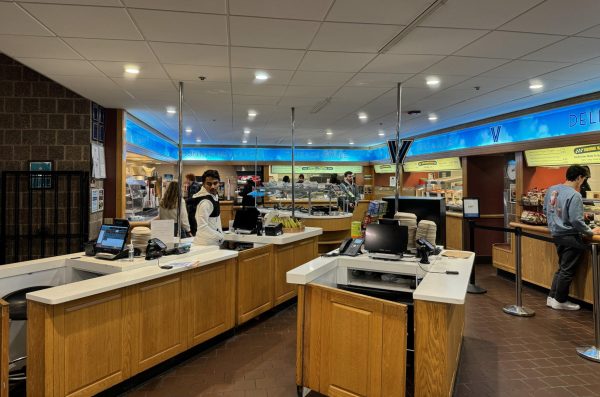Argument favoring the legalization of drugs
November 11, 2004
Three weeks ago, on Thursday, Oct. 21, Villanova’s School of Law hosted a debate about the legalization of drugs sponsored by the Federalists Society, the ACLU and the Criminal Law Society. This debate, much like the debates occurring on a national level, relied heavily on twisted facts and misconceptions to support each argument.
First, consider the history of the prohibition of marijuana. Marijuana became stigmatized in the early 1900s, when its use became linked with minority groups such as Mexican workers, African-Americans, jazz musicians and prostitutes. After many states passed laws prohibiting marijuana use, the federal government finally outlawed it in 1937. Marijuana is now considered a Schedule I drug, along with harder drugs such as cocaine and PCP. This classification means it has no known medical uses and it is illegal to possess. Though the historical connection between marijuana and minority groups would suggest that the illegalization of marijuana was a discriminatory act, there are valid public health and social concerns that are treated by this law.
One of the primary misconceptions that legalization advocates use to support their view is that drug use is a personal choice that does not affect other people. They believe that criminalizing drugs violates our right to pursue happiness. However, it is inaccurate to say that drug use does not endanger the public. Users do not only hurt themselves, they also hurt their families and their children. Eighty-two percent of child neglect and most cases of domestic violence involve drug use. In 1990, the National Transportation Safety Board found that out of 182 fatal truck accidents, an equal number of crashes were results of marijuana use as of alcohol.
Advocates of legalization also advertise marijuana as a safe and harmless drug. On the contrary, marijuana decreases motor skills (as evidenced by the 1990 truck accident data), temporarily decreases cognitive skills and is four times more carcinogenic than cigarettes. Also, because it is currently unregulated, it may be laced with dangerous substances.
While advocates of legalization sometimes rely on faulty logic, they are by no means the only ones to do so. Those who argue against legalization often commit equally egregious errors. First, they claim that legalization would promote drug-associated crime. This assumption is economically unsound. The illegal status of drugs forces their prices to skyrocket, encouraging people to push drugs for money. If drugs were sold legally at low prices, there would be less incentive to push them. As evidenced by the prohibition of alcohol from 1920 to 1933, making substances illegal may actually encourage crime rather than deter it.
Those who are against legalization also cite the fact that the FDA and American Medical Association have not acknowledged the medical value of marijuana. However, the American Nurses Association and the National Academy of Science have.
The properties of marijuana make it useful for stimulating appetite (a plus for cancer patients undergoing chemotherapy) and for controlling pain. Though Marinol, a pill containing synthetic THC, already exists, it lacks many of the benefits of actual marijuana. Patients who suffer from nausea often have trouble swallowing pills, and need the immediate relief which comes from smoking. In addition, Marinol’s high cost and psychoactive side-effects make it an undesirable alternative.
Another misconception is the “gateway theory,” which says that marijuana use leads to the use of more dangerous drugs. This misconception stems from the fact that marijuana, alcohol and nicotine are the drugs most easily available to adolescents, and naturally are the first ones that they try. Adolescents who try marijuana early on are already prone to risky behavior, and thus are willing to try harder drugs. But in Jamaica, where use is prevalent and not an outlet for risk-seeking teens, no such connection has been found. Statistics also show that legalizing marijuana will not encourage widespread use; when marijuana was decriminalized in California in the 1970s, its use rose less than five percent. If marijuana were legalized, it is unlikely that its use would become as widespread as that of alcohol and cigarettes due to higher costs and less prominent advertising.
Although both pro- and anti-legalization advocates are guilty of spreading misconceptions, one thing is clear. Whether we end our War on Drugs or radically remodel it, change is needed. The problem is our current drug policy is embodied by the following event, reported by the Washington Post on October 1, 2004. Jonathan Magbie, a quadriplegic with respiratory problems, received a 10-day sentence for marijuana possession.
Thrown into a setting that was not equipped to deal with his medical problems, he fell ill and passed away in jail. Events such as these prove that our War on Drugs is somehow misguided. Many people suggest that instead of attacking the supply of drugs, we attack the cause of drug abuse. If the $12 billion federal budget we currently dedicate to drugs were instead used in a War on Poverty, we would rectify the unfortunate situations in America which encourage drug use in the first place. We could fund prevention education, provide treatment for the addicted, and find ways to ameliorate the desperate living conditions which are causing people to turn to crime.
However, the controversial mix of religious, social and political issues that plays into this decision makes changing the path of our drug war difficult. Theologian Walter Wink, advocating change in form of legalization, makes a powerful point: “Fighting the drug war may appear to hold the high moral ground, but this is only an illusion … It’s time we bit the bullet. Addicts will be healed by care and compassion, not condemnation.”










